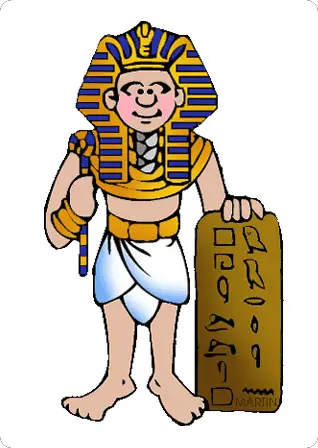Egyptian Architecture
The Pyramids
The ancient Egyptians are famous for the building of the Pyramids. The pyramids were built as the burial places of the Egyptian kings from before the start of the Old Kingdom until the end of the Middle Kingdom.
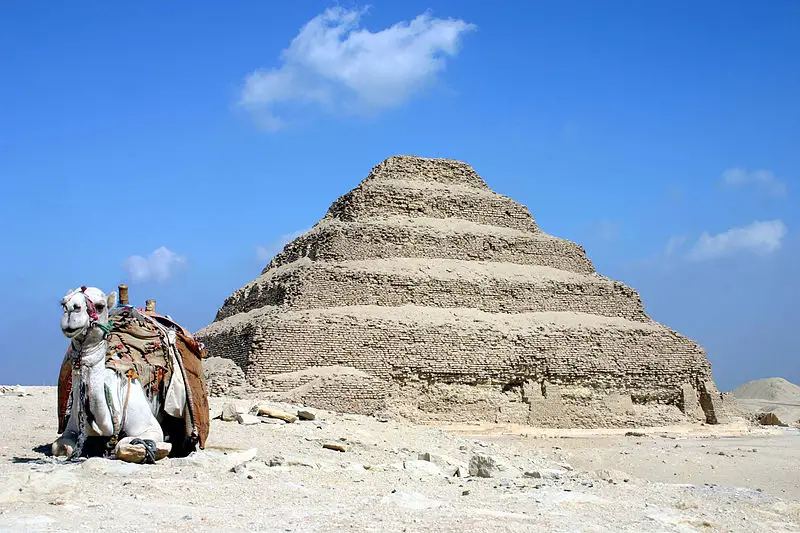
Because the Egyptians kept religious and government records, we are able to read about the building of some of these pyramids.

The Step Pyramid at Saqqara
- The Step Pyramid at Saqqara is the earliest pyramid that is still there today.
- The Step Pyramid was built in 2630 B.C.
- It was the burial place of King Djoser.
- The architect of the Step Pyramid was Imhotep.
- Imhotep was the High Priest of Ra, the sun-god. He became famous for his great wisdom and knowledge. The Egyptians later worshipped Imhotep as a god.
- The Pyramid rose in six giant steps.
- These steps were meant as a huge stairway for King Djoser to climb up to join Ra, the sun-god.

There are still over eighty pyramids in Egypt today. They are all more than 3000 years old. The architects of these pyramids were very skilled in mathematics, in technical drawing, and in knowledge of the position of the sun and stars. The pyramids were carefully designed to be in a straight line with, for example, a certain star constellation at a certain time of year, or sunrise on a particular day.
Some of the pyramids were built as step pyramids like the one at Saqqara, but many others were a real pyramid shape, with sides that were smooth and sloping.

The Great Pyramid at Giza
The Egyptians also built magnificent temples, which they believed were the homes of the gods and goddesses. The temples were added to over the centuries so several architects helped to plan them.
- The most famous of all the true pyramids is the Great Pyramid at Giza, which is the largest of the three Giza pyramids.
- The Great Pyramid was built in 2528 B.C. for King Khufu, which means that it is more than 4500 years old.
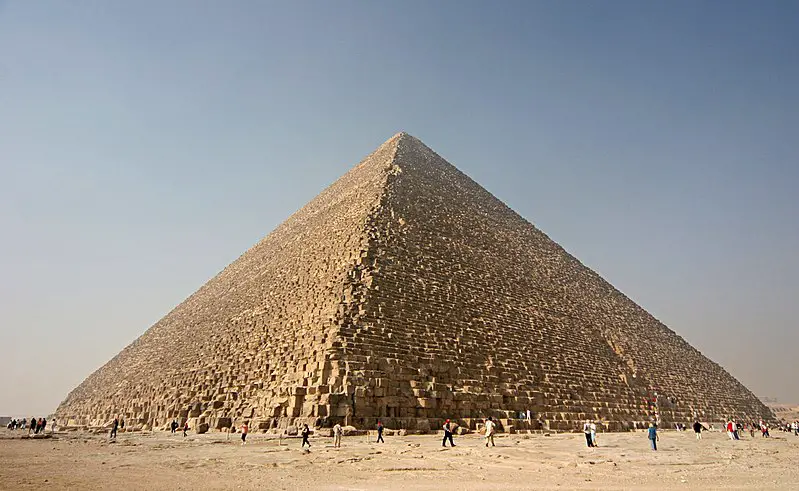
- It is the oldest of the Seven Wonders of the Ancient World.
- It was the tallest building in the world for more than 4000 years, until the 20th century.
- It is built from over 2 million huge blocks of limestone.
- It was covered with great smooth slabs of white limestone, but these were later removed to build the city of Cairo.

Because the pyramids were the burial places of kings, they were full of treasure. All the king’s riches and belongings were buried with him to keep him happy in the afterlife.
Robbers tried to break into the pyramids to steal the treasure. So the architects tried to fool the robbers:
- Each pyramid had only one true entrance, but several other, false, entrances were made.
- The inside of the pyramid had lots of false doors and false passages which led to rooms filled with rubble or blank walls.
- The doors were built of granite and were almost impossible to move. Even if the robbers managed to open a door, they might find a blank wall behind it.
However, almost all the royal tombs were eventually broken into and all the treasure removed.

The Temples
The Egyptians also built magnificent temples, which they believed were the homes of the gods and goddesses. The temples were added to over the centuries so several architects helped to plan them.
- The temples were built of stone, as at Luxor, or built into the solid rock, as at Abu Simbel.
- The temples were filled with high stone pillars which supported a heavy stone roof.
- The walls were covered with carvings showing the pharaoh’s victories in war. The pictures also showed the pharaoh together with the gods.
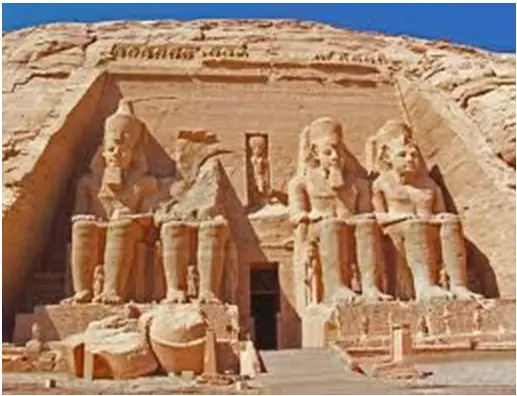
- Many of the temples contained enormous statues of the pharaoh.
- The temple at Abu Simbel has four huge statues of the Pharaoh Ramses the Second, 20 metres high, wearing the double crown of Upper and Lower Egypt.
- There are also several temples at Luxor with statues of the Pharaoh Ramses the Second, who was worshipped as a god.
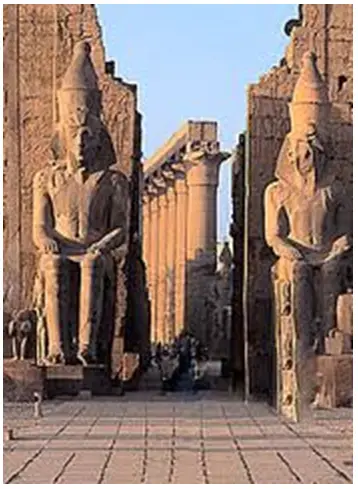

The building of a temple was accompanied by rituals connected to the worship of the goddess Seshat, ‘The Mistress of the House of Architects’. All the rituals had a practical side and the Pharaoh played an important role.
The words spoken by the Pharaoh at the ritual of making the measurements on the ground are recorded in hieroglyphics on a temple wall:
“I hold the peg. I grasp the handle of the club and grip the measuring cord with Seshat (Goddess of Architects). I turn my eyes to the movements of the stars. I send forth my gaze to the Bull’s thigh (the star constellation of the Great Bear). I count time. I watch the clock. I establish the four corners of your temple.”

